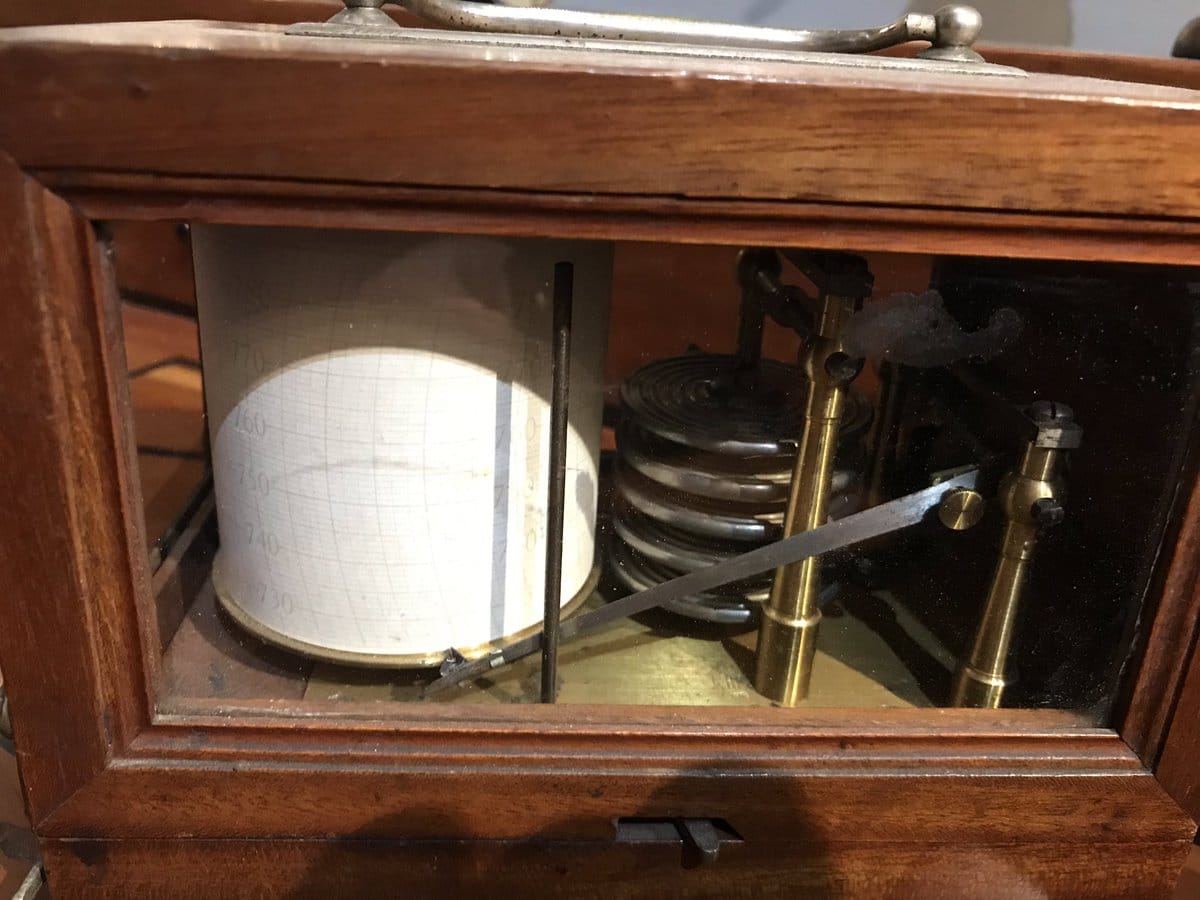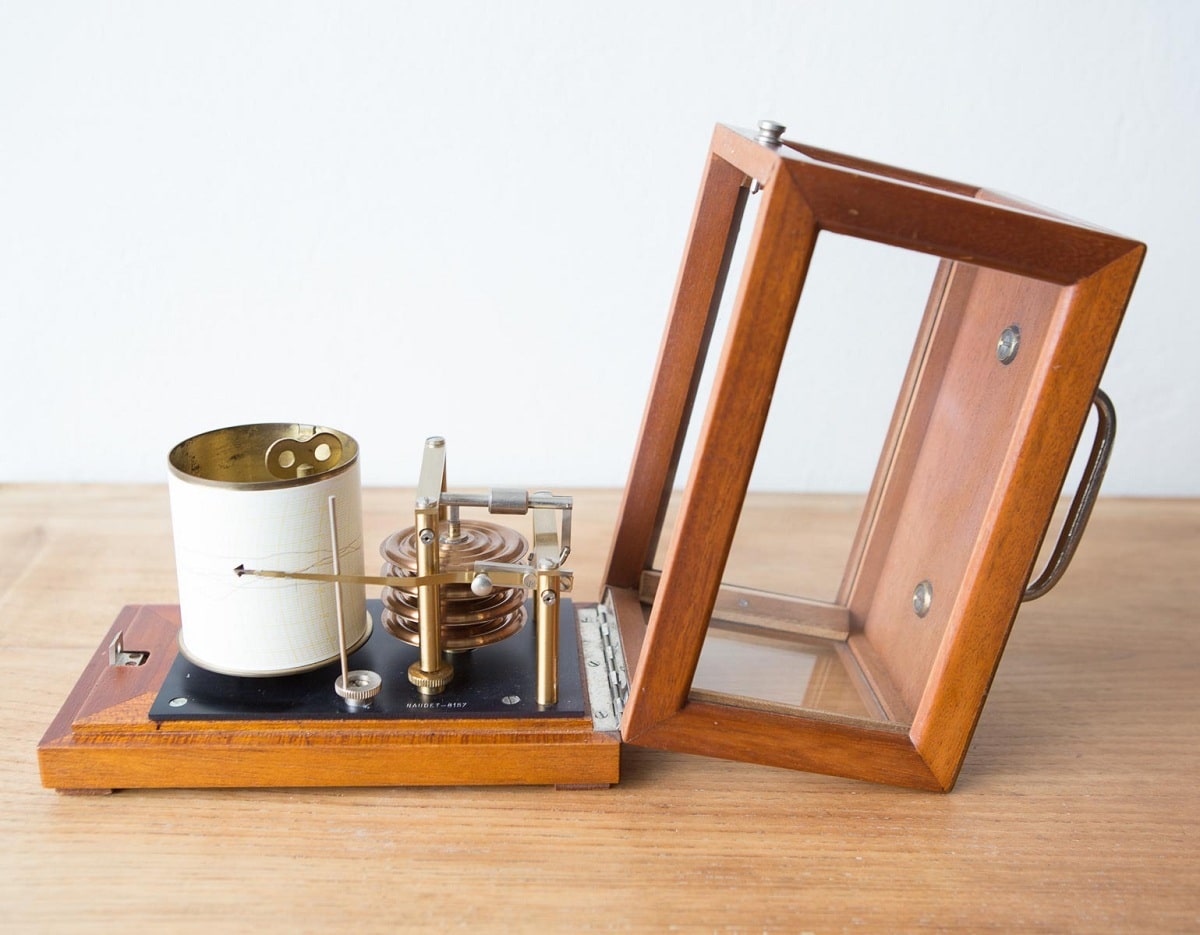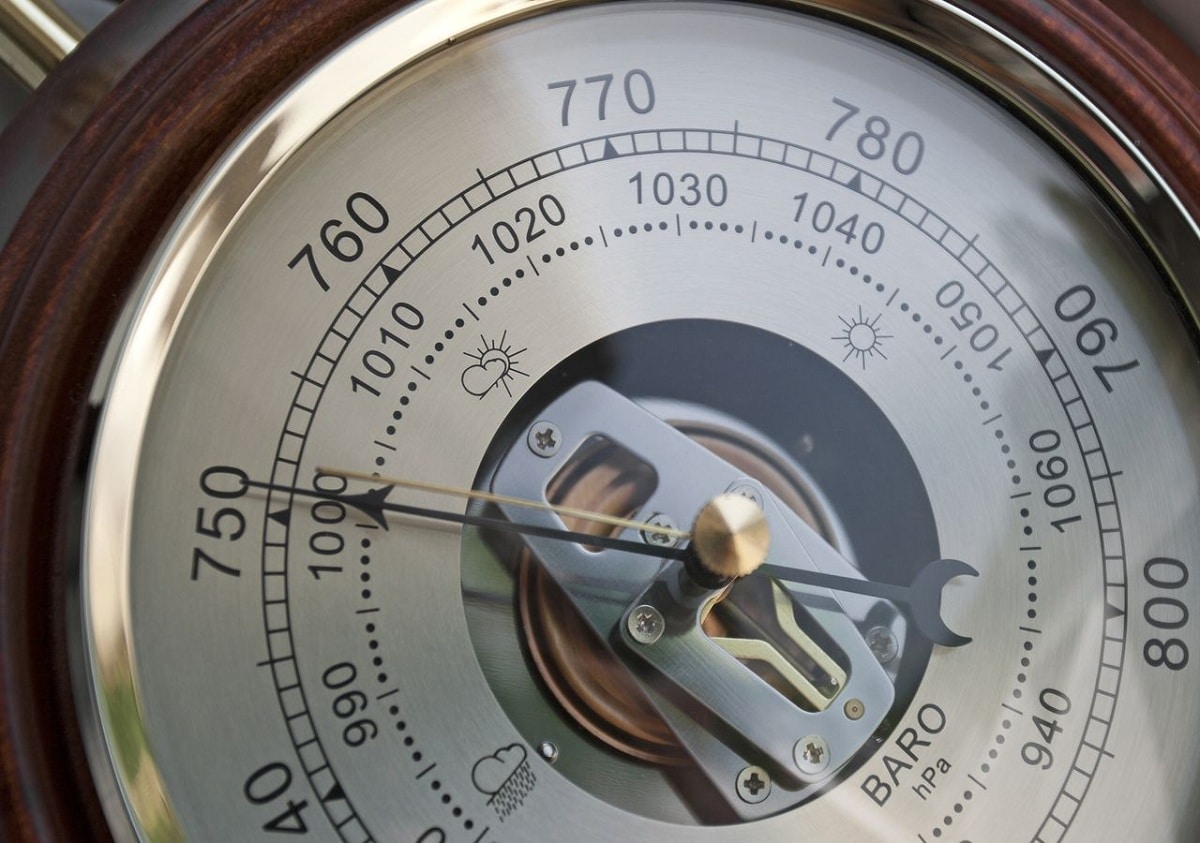
Atmospheric pressure is something very important to take into account in meteorology if we want to make good predictions and study the behavior of the climate. All atmospheric and meteorological phenomena are conditioned by changes in atmospheric pressure. Since it is not something tangible, it is difficult to learn to measure atmospheric pressure. There are several meteorological instruments that can measure these values. One of them is the barograph.
In this article we are going to tell you about all the characteristics, operation and importance of the barograph.
Importance of measuring atmospheric pressure

Although it seems not, the air is heavy. We are not aware of the weight of the air since we are submerged in it. Air offers resistance when we walk, run or ride in a vehicle, because, like water, it is a medium through which we travel. The density of water is much higher than that of airThat is why in the water it is harder for us to move.
The barograph is an instrument that helps to give a continuous reading of the measurement of atmospheric pressure values. The barograph is the device by which the values obtained through the barometer can be recorded. This device is incorporated into the barograph and the reading of the values is not obtained by means of mercury. It is based on the reading obtained by the crushing produced by atmospheric pressure on the thin layers of metal as a cylindrical shape.
To prevent pressure from damaging the structure of the barometer, springs of a small size are incorporated that prevent the measuring capsules from being crushed. A pen can be placed on top of it, which is responsible for directing the rotating drum. This drum is in charge of rotating so that the graduated paper can be moved and the mile traces the atmospheric pressure values on the paper. Thanks to the use of the barograph, it is possible to know and observe in detail the various continuous changes to which the barometer is subjected. In addition, we can know the atmospheric pressure values.
Records in the barograph

When the atmosphere is calm, it is known in meteorology as a barometric swamp. Here it refers to when the graphs can record values of positive or negative changes. This is where climate changes are referred to when one of these changes appears abruptly. You can easily interpret these peaks also known as saw teeth.
The operation of this apparatus is based on the various deformations of a bellows with a vacuum inside that is sensitive to changes in atmospheric pressure. In this way, it can be compressed when there are high pressures and stretched when there are low pressures. Its movement is transmitted by a system of levers that is connected to an arm that is responsible for recording the data with a pen. The pen is usually of the spoon type and is located at the end. The registration is made on the roller that rotates on its axis thanks to an internal clockwork mechanism.
There are some models that, depending on the size of the roller, can last more or less. Most models usually last about a week which it is how long it takes for the pen to use up its ink and write all over the roller.
It is logical to think that if the atmospheric pressure is due to the weight of the air over a certain point on the earth's surface, we must assume that the higher the point is, the lower the pressure will be, since the amount of air per unit is also less. above. Atmospheric pressure is measured as is speed, weight, etc. It is measured in atmospheres, millibars, or mm Hg (millimeters of mercury). Normally the atmospheric pressure that exists at sea level is taken as a reference. There it takes a value of 1 atmosphere, 1013 millibars or 760 mm Hg and a liter of air weighs 1,293 grams. The unit most used by meteorologists is that of millibars. All these values are registered in the barograph.
Barograph and barometer

Actually, in order to measure atmospheric pressure, barometers are used. There are barometers of various types. The best known is the mercury barometer that was invented by Torricelli. It is a U-shaped tube with a closed branch in which the vacuum has been drawn, so that the pressure in the highest part of this branch is zero. In this way the force exerted by the air on the liquid column can be measured and the atmospheric pressure measured.
Atmospheric pressure is due to the weight of air over a certain point on the earth's surface, therefore, the higher this point is, the lower the pressure will be, since the less amount of air there is. We can say that the atmospheric pressure decreases in altitude. For example, on a mountain, the amount of air in the highest part is less than that on a beach, due to the difference in height.
Pressure decreases with height normally. The higher we climb in altitude, the less pressure we have and the less force the air exerts on us. The normal thing is that it decreases at a rate of 1 mmHg every 10 meters of height.
Relationship with meteorological phenomena
As we have mentioned before, atmospheric pressure is one of the most important variables for the prediction of meteorological phenomena. Rains, winds, storms, etc. They are related to atmospheric pressure levels. At the same time, These values are directly related to the height we are at and the amount of incident solar radiation. It is the rays of the sun that generate movements of air masses that trigger the various atmospheric phenomena that we know of.
Therefore, the importance of measuring atmospheric pressure and the use of the barograph and barometer is essential for meteorological prediction.
I hope that with this information you can learn more about the characteristics and uses that are given to the barograph.